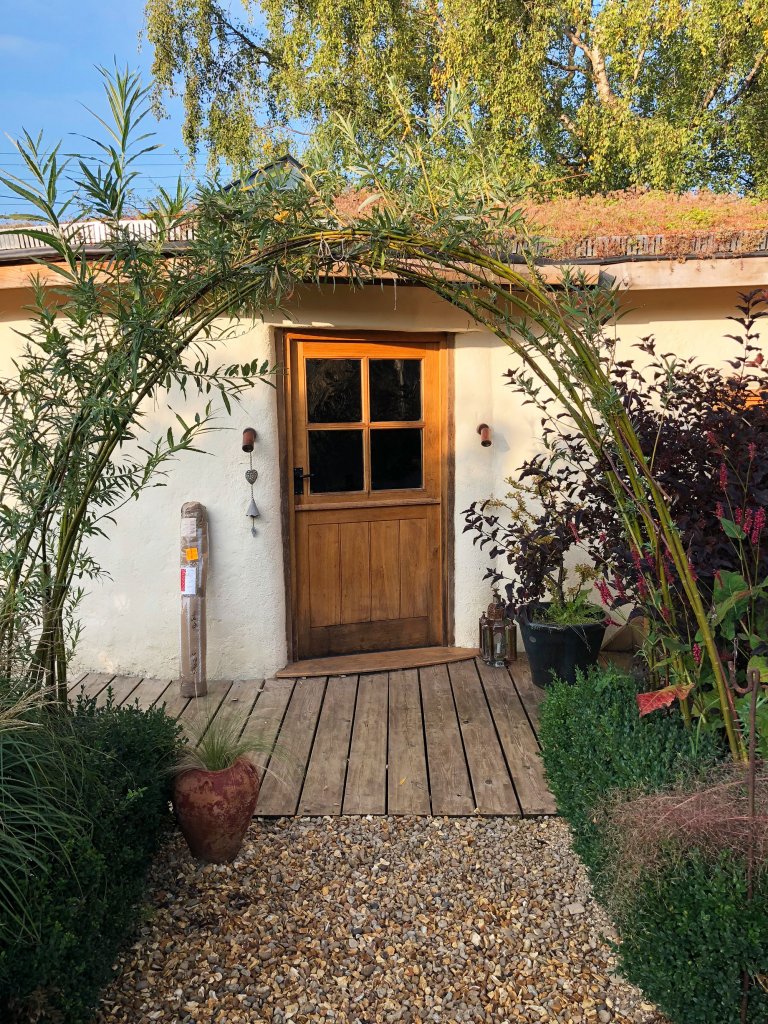Building with straw bales has been enjoying a revival in the UK since the mid 90s. In fact, it’s become the darling of the eco building movement.
Not only does it use a waste product that’s otherwise burned in fields, it also provides fantastic levels of insulation and airtightness. What’s more, its high thermal mass means it’s cool in summer and warm in winter.
The bales’ depth and flexibility result in houses that have great charm and character. They also allow for plenty of alcoves or deep window reveals, and even curved walls.
And they’re pretty durable. Examples of straw bale buildings from 1903 still stand in Nebraska.
How does straw bale work?
There are two main types of construction: loadbearing and infill. With loadbearing construction bales are stacked like bricks, and take the weight of the floor plate, joists and roof. Doors and windows fit into box frames that are built into the bales as the walls go up.
With the infill method the weight of the roof and floors is carried by a timber, steel or concrete framework. Bales provide the infill and key for plaster. This method allows wider spans and larger openings, but tends to be more expensive.
Either breathable lime or clay render protects the walls of both systems.
Straw Bale House Built for £70,000When Alison and Stuart Sedgwick-Taylor decided to build a small house in their garden back in 2015, they knew building with straw bale was the way forward for them. The resulting design is a circular room that can be easily adapted for varying uses, with two adjoining smaller pods containing the bathroom and kitchen. |
What about fire and pests?
Straw bale houses are no more at risk of fire than those of conventional construction.
The principle is simple. Loose paper burns easily, but you’d have a job setting fire to a telephone directory. Hence, straw compacted in bales is very hard to set fire to as there’s not enough air for combustion. The breathable layer of lime plaster also offers fire protection. Because it is also highly alkaline, it also helps prevent fungal activity.
As for rodents, rats and mice like to have cavities to run around and nest in, so are in fact less likely to be a problem in the solid walls of a straw bale house than a conventional house.
The post Building with Straw Bales appeared first on Build It.
Article reference Building with Straw Bales

No comments:
Post a Comment